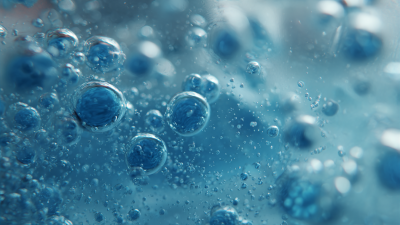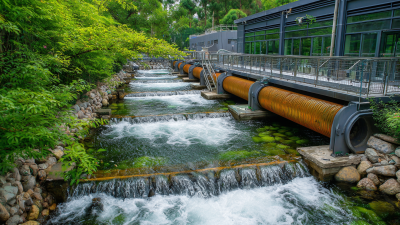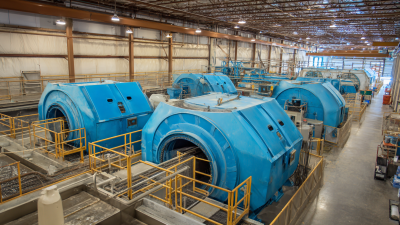 +86 13600513715
+86 13600513715



In the pursuit of enhancing wastewater treatment processes, the adoption of innovative technologies has become essential. Among these advancements, the integration of Pp Tube Setters in modern filtration systems stands out as a pivotal development. These specialized devices serve to improve the efficiency of sedimentation, allowing for more effective separation of solids from liquids in various wastewater applications. As communities and industries become increasingly aware of environmental responsibilities, maximizing the effectiveness of wastewater treatment is crucial to meet regulatory standards and sustainability goals.
This article will explore the role of Pp Tube Setters in contemporary filtration systems, highlighting their unique design features and operational benefits. By facilitating the rapid settling of particulates, these tube settlers not only enhance the treatment process but also contribute to the reduction of overall sludge volumes, thus minimizing disposal costs and environmental impact. Emphasizing their importance in modern wastewater management, we will delve into the top five advantages of incorporating Pp Tube Setters in treatment facilities, showcasing their potential to revolutionize conventional methods and set new benchmarks in efficiency. Through a deeper understanding of these systems, operators and engineers can make informed decisions to optimize wastewater treatment processes for a sustainable future.

PP tube settlers play a significant role in enhancing the efficiency of modern filtration systems by optimizing the treatment of wastewater. These innovative structures promote the settling of suspended solids through their unique design, which maximizes surface area in a compact footprint. As water passes through the tube settlers, the gravitational force drives the solids downwards, allowing for effective sedimentation without taking up excessive space. This makes them particularly beneficial for facilities dealing with high volumes of wastewater, where maximizing efficiency is crucial.
Tips: To ensure optimal performance of PP tube settlers, regular maintenance is essential. Periodically inspect and clean the tube surfaces to prevent clogging and ensure that the settling process remains uninterrupted. Additionally, monitor the flow rates entering the settlers, as excessive velocities may hinder the settling process and reduce overall efficiency.
By utilizing PP tube settlers, filtration systems not only improve their operational efficiency but also contribute to better environmental outcomes. The reduction of suspended solids leads to less pollution and a cleaner discharge into natural water bodies. Facilities that implement this technology often see enhanced compliance with environmental regulations, making PP tube settlers a valuable element in contemporary wastewater treatment strategies.
Tips: Consider implementing an automated monitoring system to track the performance of your PP tube settlers. This can help identify issues early on, ensuring that the filtration system operates at peak efficiency consistently.
In modern wastewater treatment processes, the integration of polypropylene (PP) tube settlers has proven to be a game-changer in enhancing filtration efficiency. The use of PP tube settlers, known for their lightweight yet durable structure, enables a higher sedimentation rate, significantly reducing the footprint required for treatment facilities. According to recent industry analyses, the adoption of tube settler technology can enhance solids removal by up to 30%, compared to traditional settling methods. This improvement not only optimizes space but also enhances the overall throughput of treatment plants.
Moreover, the material composition of PP tube settlers offers substantial resistance to corrosive environments commonly found in wastewater settings. This durability contributes to lower operational costs and extended service life, allowing facilities to allocate resources more effectively. A study on modern wastewater systems indicated that facilities utilizing tube settlers experienced a decrease in maintenance expenses by approximately 25%. With the growing urgency for efficient water treatment solutions, the advantages of employing PP tube settlers in filtration processes underscore their vital role in achieving sustainable wastewater management.
The comparative analysis of PP tube settlers versus traditional settling methods reveals significant advancements in wastewater treatment efficiency. Traditional settling techniques often rely on gravity to separate solids from liquids, which can be slow and inefficient in larger systems. In contrast, PP tube settlers utilize a series of inclined tubes that facilitate a more effective sedimentation process. The design allows for a greater surface area without increasing the footprint of the treatment facility, resulting in enhanced solids settling rates and reduced retention times.
Moreover, PP tube settlers exhibit superior performance in handling variable influent conditions, making them ideal for modern filtration systems. As cities evolve and environmental regulatory standards tighten, the adaptability and efficiency of PP tube settlers position them as a crucial component in wastewater management. Incorporating these advanced systems not only supports sustainability goals but also aligns with trends toward automation and smart technology in infrastructure, much like the emerging techniques for detecting ground settlement in various engineering applications.
The design of tube settlers has a profound impact on the filtration efficiency and overall performance of modern wastewater treatment systems. By optimizing channel dimensions and flow patterns, tube settlers can significantly enhance the sedimentation process, leading to improved removal of contaminants, including micropollutants. Recent studies highlight the effectiveness of integrating tube settlers with fluidized aerobic bioreactors, particularly in addressing the challenging issue of pharmaceutical pollutants in hospital wastewater. This combination allows for a more efficient retention time for solids, thus facilitating a more thorough removal of harmful compounds.
Moreover, the arrangement and spacing of tube settlers within a treatment system can influence the settling velocity and clarity of the effluent. By maximizing contact between the wastewater and settling surfaces, operators can reduce the concentration of pharmaceuticals from ngL−1 to µgL−1 levels. This advancement is crucial as the presence of such micropollutants poses serious environmental and health risks. Hence, investing in well-designed tube settlers not only maximizes treatment efficiency but also contributes significantly to the sustainability of water resources.
| Parameter | Value | Impact on Filtration Efficiency |
|---|---|---|
| Tube Diameter (mm) | 50 | Increased flow rate leads to faster settling rates. |
| Settling Velocity (m/s) | 0.1 | Enhances particle removal efficiency. |
| Effective Settler Area (m²) | 20 | Larger area improves sedimentation performance. |
| Tube Configuration | Horizontal | Optimizes flow direction for better particle settling. |
| Tube Settler Height (m) | 1.5 | Adequate height allows sufficient time for sedimentation. |
| Retention Time (min) | 30 | Longer retention time increases treatment efficiency. |
The implementation of PP tube settlers in modern wastewater facilities significantly enhances treatment efficiency. According to a recent report by the Water Environment Federation, these tube settlers improve the sedimentation process, leading to up to 30% more effective removal of suspended solids compared to traditional systems. This increased efficiency is crucial for meeting regulatory standards and reducing operational costs in wastewater treatment facilities.
When integrating PP tube settlers, it’s essential to adhere to best practices to maximize their benefits. First, ensure that the design of the settlers accommodates the specific flow rates and characteristics of the wastewater being treated. Additionally, regular maintenance and cleaning of the settlers can prevent clogs and maintain optimal performance.
Tips: Always calibrate your tube settlers to the unique conditions of your facility, and consider incorporating real-time monitoring systems to track performance metrics. Engaging in training for staff on the operation and maintenance of these systems can significantly improve outcomes and prolong the lifespan of the equipment.






